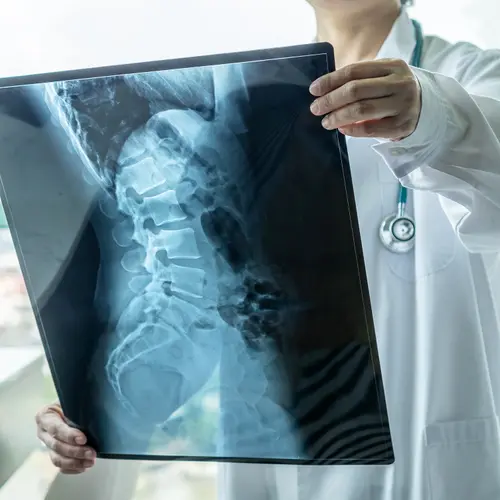Ankylosing spondylitis (AS) is an inflammatory disease that affects the joints and bones of the spine. The condition is one of the best-known forms of spondyloarthritis, or arthritis of the spine.
Doctors use a number of different names for this type of arthritis. Each one describes a distinct phase or stage of the disease. Knowing these different terms can help you better understand the condition and how it can change over time.
First, it’s important to note that axial spondyloarthritis (axSpA) is an umbrella term that covers several arthritis-related conditions of the spine. Think of axSpA as a wide spectrum of symptoms -- the level of pain you feel and how it affects your everyday life varies depending on where you are on the spectrum. Most people with the condition will have back pain, but it’s possible to have pain in the neck, pelvic area, buttocks, arms, and legs.
Axial spondylarthritis mainly consists of two diseases:
- Nonradiographic axial spondyloarthritis (nr-axSpA)
- Radiographic axial spondyloarthritis. This type is more commonly known as ankylosing spondylitis (AS).
Your doctor will use a mix of imaging tests like X-ray or MRI, physical exams, and blood tests, along with other factors like your family history and genes, to diagnose you and determine which type you have.
- Nonradiographic axial spondyloarthritis (nr-axSpA). This is the less severe form of spondyloarthritis. “Nonradiographic” means that something is not easily visible on an X-ray. If you’re feeling pain in your back and some of the other common symptoms, your doctor may order an X-ray to look for the cause. But if the test doesn’t show any notable changes in the joints connecting your spine and pelvis, called the sacroiliac joints, you may need a more sensitive test like the MRI to detect issues.
- Radiographic axial spondyloarthritis. This is the first phase of ankylosing spondylitis. It happens when nr-axSpA gradually gets worse and affects the sacroiliac joints and the bones of the spine. Your doctor will be able to see noticeable changes in these joints on an X-ray.
Some people who have early AS go on to have more severe disease. The bones of the spine can fuse together, a process called “ankylosis.” Doctors call this advanced phase “bamboo spine.” You can feel a lot of pain in your back, stiffness, and soreness, which could limit your flexibility and movements. That can make it hard to do daily tasks.
Not everyone who is diagnosed with the less severe nr-axSpA will go on to have AS. And many people who get early AS won’t have bamboo spine. For all forms of AS, the treatment with physical therapy, diet, exercise, and medication can keep the condition and your symptoms under control. Surgery in the hip or spine may benefit some people with severe forms of AS.

